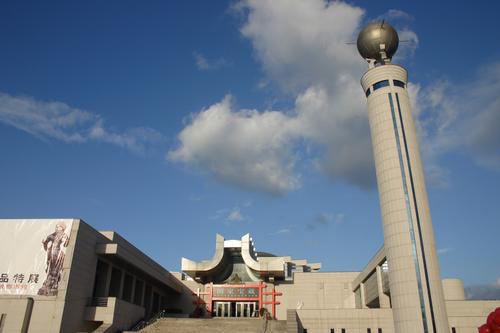

Situated at the northern end of West Lake Park in the provincial city of Fuzhou, the Fujian Provincial Museum holds an interesting collection of exhibits and artifacts.
The Museum was founded in April 1953, and its predecessor was the Scientific Museum of Fujian Province. Over half a century's development, the museum is now the biggest in Fujian.

The Museum boasts more than 50,000 cultural relics, of which 360-odd items are of the first grade, mainly including rare artworks, excavations and revolutionary documents. Most notable cultural relics in the Museum include silk costumes unearthed in a Southern Song (1127-1279) tomb, a porcelain statue of Guanyin (a Bodhisattva of Compassion) produced in the Ming Dynasty (1368-1644), and paintings of masters in the Ming and Qing dynasties (1368-1911).
The Museum mainly features three basic exhibition halls: Ancient Historical Relics of Fujian, Revolutionary History of Fujian, and Fossils of Natural Resources of Fujian. The Hall of Ancient Historical Relics covers an area of 1,000 square meters, with 1,085 relics ranging from pottery of the late Primitive Society (Tanshishan Culture) to iron production tools and weapons of the Han Dynasty (206 BC-220 AD), and to the porcelain of the Ming Dynasty (1368-1644). The most famous of these, a 3500-year-old coffin boat discovered in Wuyi Mountain Cave, is of particular interest.
Covering 980 square meters, the Hall of Revolutionary History has over 700 relics centering on the revolutionary movements from May 4th Movement in 1919 to the present.
By Lucy